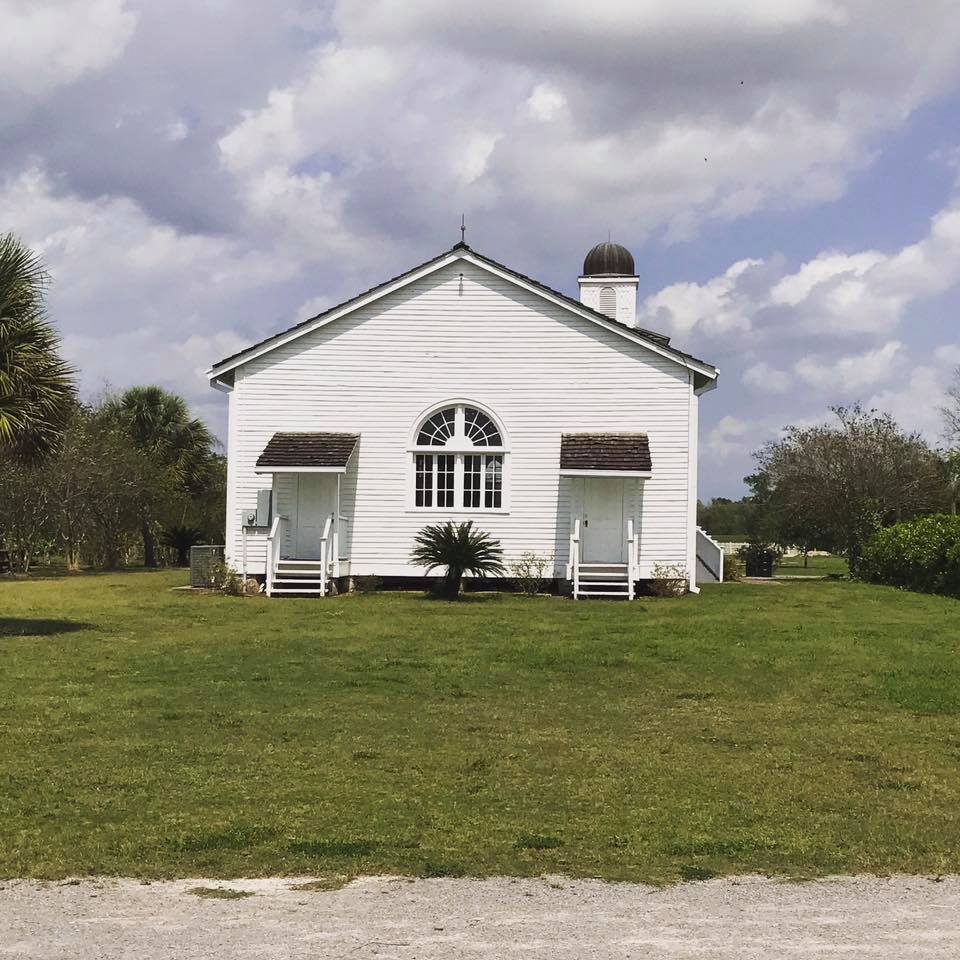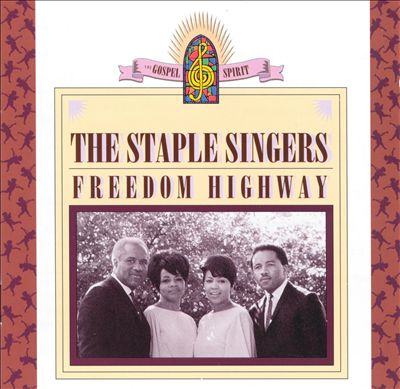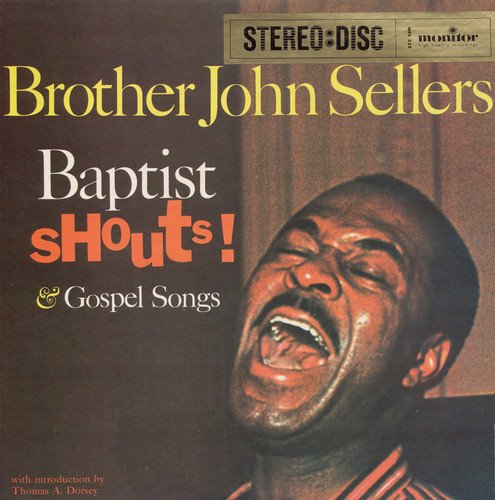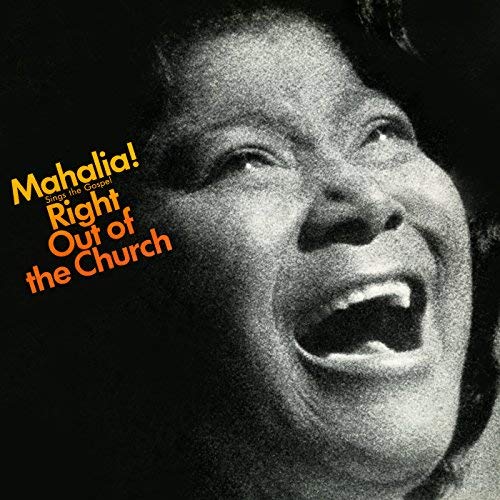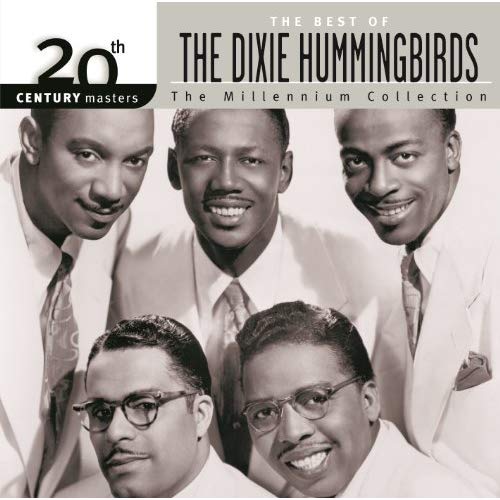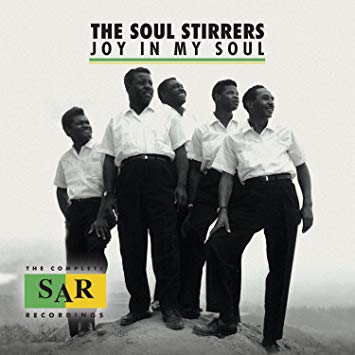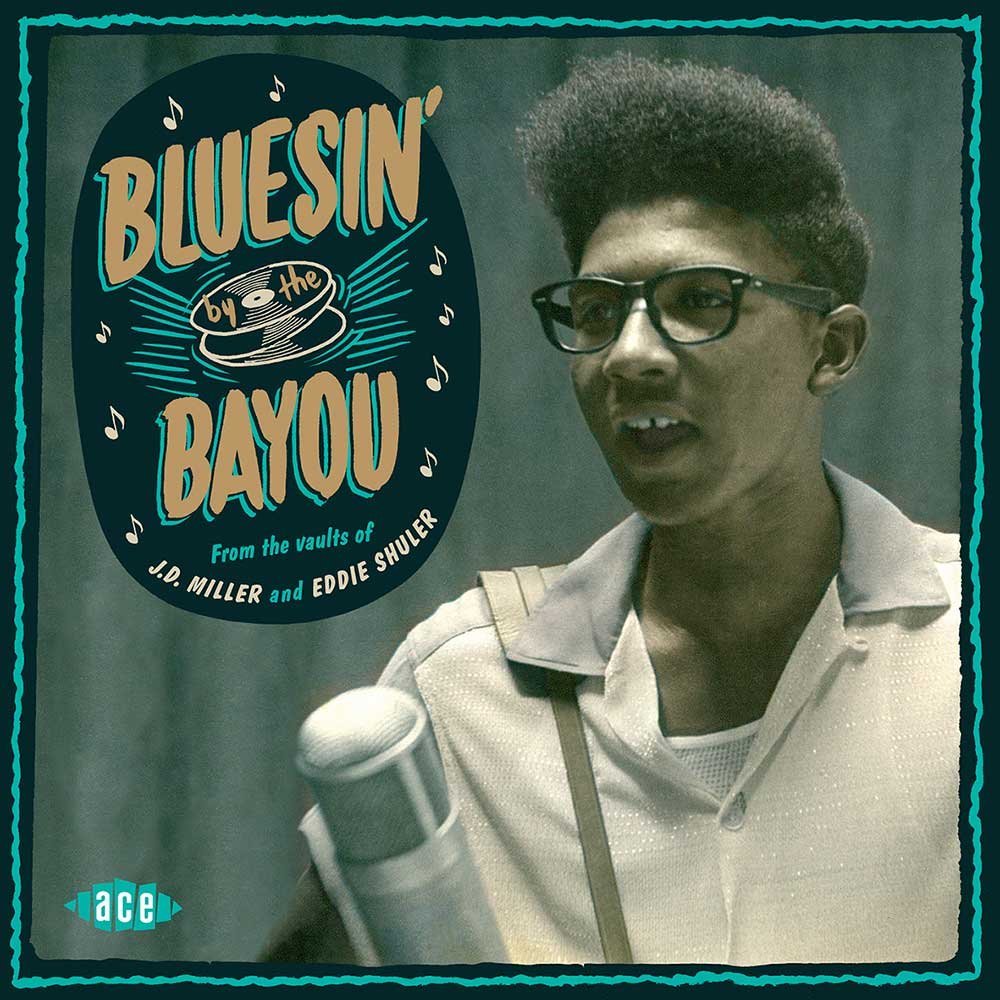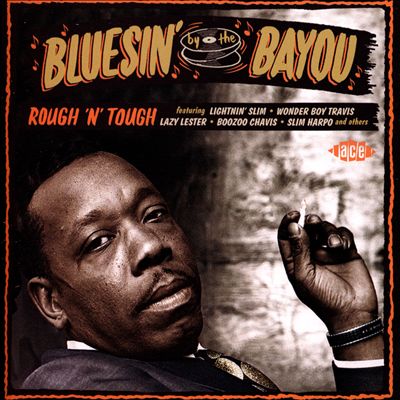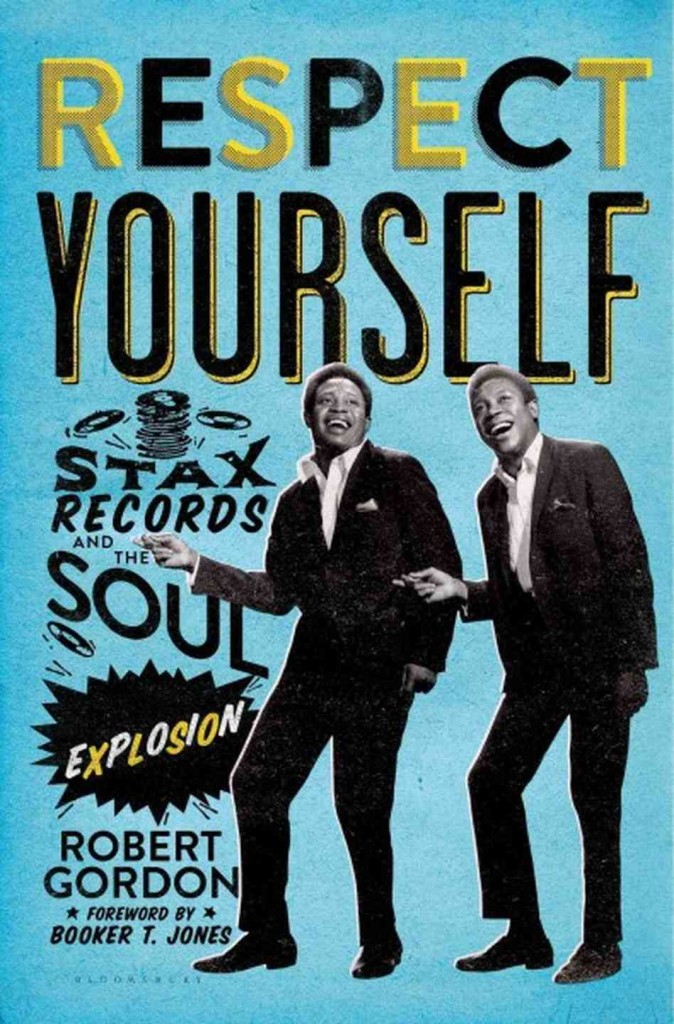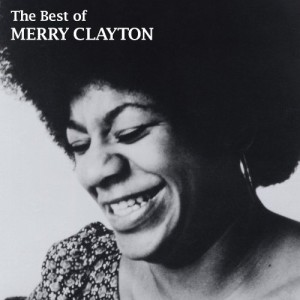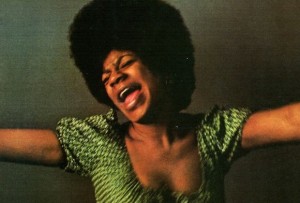Tag Archives: The Rolling Stones
GOSPEL MUSIC IS THE ROOTS?
Born in Arkansas in 1915 Sister Rosetta Tharpe influenced Rock and Popular music more then most people know. A young Little Richard got his start by opening for her before anybody knew who he was. Elvis, Johnny Cash, and Bob Dylan all cite Sister Rosetta as a major influence, and during her heyday she performed for stadium sized crowds all over the world. In short, Sister Rosetta was a rockstar before Rock n’ Roll even existed.
BLUESIN’ BY THE BAYOU: Swamp Blues at it’s finest!
Few people were better at discovering musical talent in Louisiana during the 1950’s and 60’s then J.D. Miller and Eddie Shuler. Instrumental in bringing styles such as Zydeco, Cajun, and Swamp Pop to the ears of the world, they each made their mark by recording and producing local unknown talent. Miller recorded the artists he discovered then usually sold the tapes to other record labels while Shuler recorded and released music on his own Goldband label. Now, thanks to the fine people at ACE Records, there are TWO new excellent compilations that focus on the Blues recordings produced by Miller and Shuler.
Part of ACE’s “By The Bayou” series, these discs, entitled Bluesin’ By The Bayou and Bluesin’ By The Bayou: Rough & Tough, are both supreme examples of the Louisiana Blues scene during the 50’s and 60’s. Sometimes known as “Swamp Blues” the music on these recordings is a mix of down-home Country Blues with a few touches of R&B, Zydeco, and Cajun Music thrown in for good measure. These recordings are essential for any Blues or Roots Music fan’s record collection. This is as greasy as it gets!
Some of the artists featured on Bluesin’ On The Bayou
SLIM HARPO
Born in Baton Rouge, Louisiana, Slim Harpo was one of the most successful and best known of all Swamp Blues artists. His songs “I’m A King Bee” (1957) and “Shake Your Hips” (1961) were both covered by The Rolling Stones and he had a number one hit in 1966 with “Baby Scratch My Back”. Included on Bluesin’ By The Bayou: Rough and Tough are his single “My Little Queen Bee”, an answer to his first hit “King Bee”, and a cover of Lonesome Sundown’s “Bought Me A Ticket”
LONESOME SUNDOWN
Lonesome Sundown was born Cornelius Green in 1931 on a plantation in Donaldsville, Louisiana. Well versed in a variety of musical styles, Lonesome Sundown’s music ranged from down-home Blues to Country to Roll-licking R&B. He was never a household name but nevertheless was responsible for some of the most exciting music to come out of Louisiana in the 50’s and 60’s. Included on Bluesin’ By The Bayou: Rough and Tough are romping versions of his songs “I’m Gonna Stick To You Baby” and “If Anybody Asks You”. Both songs are essential listening for any Blues fan.
LIGHTNIN’ SLIM
One of the most important and influential bluesmen to ever come out of Louisiana, Lightnin’ Slim was actually born in St. Louis, Missouri. He moved to Louisiana when he was a teenager and soon picked up the guitar and began playing in clubs. In 1954 he recorded “Bad Luck Blues” with J.D. Miller and regularly performed with fellow Louisiana bluesmen Lonesome Sundown, Lazy Lester, and Slim Harpo. Included here in this collection is his song “Trip To Chicago” which talks about the groups “adventure” to play a gig in the Windy City! Fellow Louisiana bluesman Buddy Guy credits Lightnin’ Slim as one of his biggest influences.
LAZY LESTER
A talented multi-instrumentalist, Lazy Lester performed on many recordings produced by J.D. Miller as both a front-man and backup musician. His first major his was the his 1958 release “I’m A Lover Not A Fighter”. Originally written by J.D. Miller, this song put Lester on the map and was coupled with the b-side “Sugar Coated Love”. Still an excellent performer to this day, he still tours nationally and is a favorite at Blues festivals. He was inducted into the Blues Hall Of Fame in 2012. UPDATE 2018: Sadly Lester passed away on August 28, 2018. He was 85
NO MORE DOGGIN’ The RPM Records Story: Vol 1 1950-1953
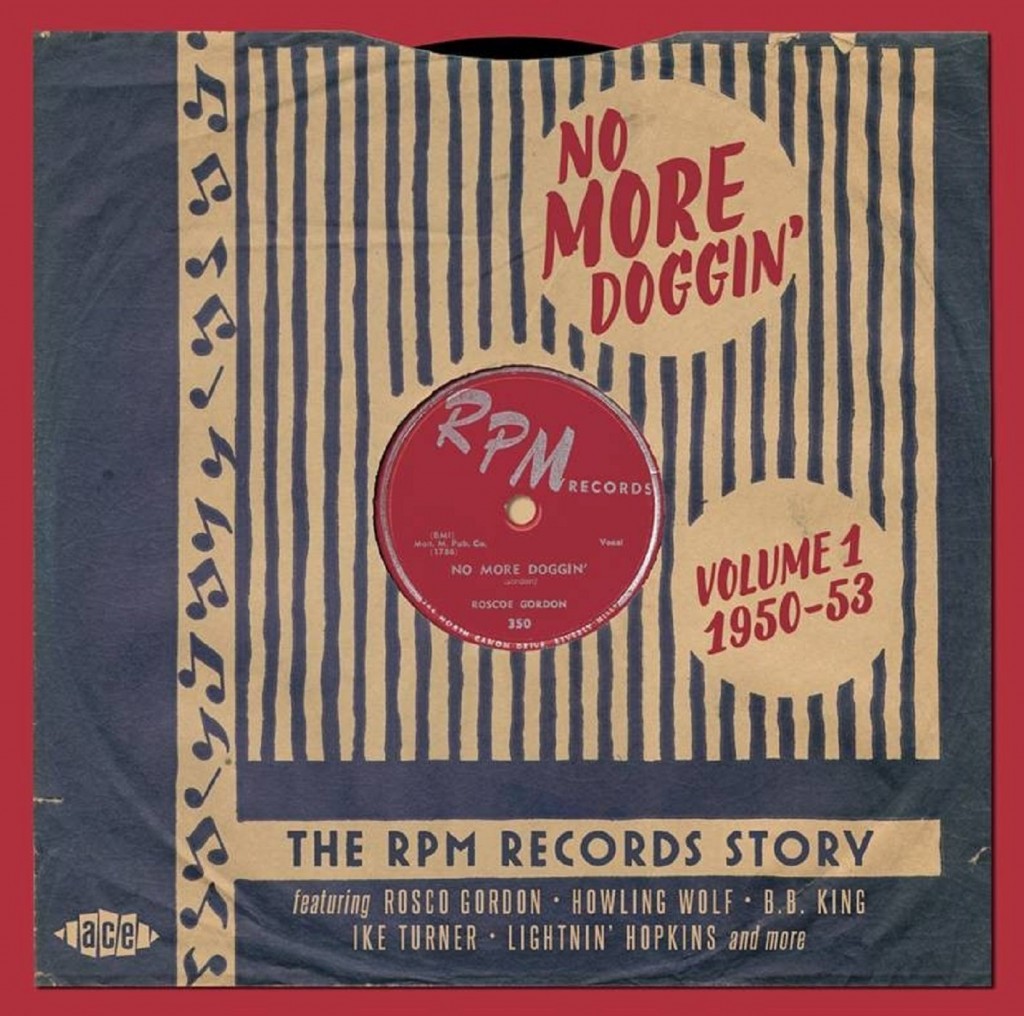 Full of Jump Blues, early R&B, and down-home Country Blues, the double-disc collection No More Doggin’ The RPM Records Story Vol. 1 might be one of the best introductions to early 50’s blues ever. Compiled by the good folks at ACE Records, this collection covers the early years of RPM Records and features well know artists like B.B. King, Howlin’ Wolf, and Lightnin’ Hopkins.
Full of Jump Blues, early R&B, and down-home Country Blues, the double-disc collection No More Doggin’ The RPM Records Story Vol. 1 might be one of the best introductions to early 50’s blues ever. Compiled by the good folks at ACE Records, this collection covers the early years of RPM Records and features well know artists like B.B. King, Howlin’ Wolf, and Lightnin’ Hopkins.
Started in 1950 by the Bihari Brothers, RPM was meant to be a subsidiary of the Bihari’s very popular label Modern Records. After initially having lots of success with Modern, the Bihari’s began having trouble getting their records played on the radio due to stations not wanting to play too many sides from any one label. So in order to get their product on the airwaves the Bihari’s started a number of subsidiary labels. Probably the most popular of Modern’s subsidiary labels, RPM introduced the world to a Memphis radio DJ by the name of Riley B. King. Eventually known as “B.B. King”, Riley came to the attention of the Bihari Brothers thanks to their working relationship with Memphis talent scout/producer Sam Phillips. Phillips at the time was recording local artists with his Memphis Recording Service then sending the masters to labels like Modern and Chess. Trough their relationship with Phillips, the Bihari’s got hooked up with some of the best talent in Memphis. Unfortunately their relationship ended when Phillips and the Bihari’s had a disagreement over a B.B. King session and went their separate ways. Fed up with feeding product he recorded to other labels, Phillips then decided to start his own label, Sun Records. As for Modern/RPM, even without the help of Phillips the label still went on to produce many more hits, including B.B. King’s breakthrough hit record Three O’Clock Blues.
No More Doggin’ The RPM Records Story Vol. 1 starts off with the Dixieland-style track “Alabama Bound”. Sung by Adele Francis, this tune was RPM’s first release in 1950. Other stand out tracks are Sonny Blair’s down-and-out blues ballad “Glad To Be Back Home”, B.B. King’s “Other Night Blues, and Howlin’ Wolf’s “Riding In The Moonlight”. My personal favorite recordings on this collection are the Lightnin’ Hopkins tracks. Excellent versions of “Bad Luck and Trouble” and “Another Fool In Town” showcase Hopkins at his bluesy best, while “Jake Head Boogie” shows that he also could ROCK when he wanted to. Another nice surprise on this collection is the tune “It’s Time For Lovin’ To Be Done”. Performed by Detroit Bluesman Little Eddie Kirkland, the song features uncredited backing vocals by the great John Lee Hooker!
As usual the folks at ACE left no stone unturned when putting this collection together. Included in this collection is a nice history of RMP records as well as a few words on all the performers. All of the albums 52 tracks sound crisp and clear thanks to the extra care shown by the folks who did the remastering. If you want to hear where Rock N’ Roll really began this collection is for you.
RESPECT YOURSELF: The Story of STAX Records
RESPECT YOURSELF: THE STORY OF STAX RECORDS Bloomsbury USA
Author Robert Gordon has been writing about the music of Memphis for almost 30 years. In Respect Yourself: The Story of STAX Records Mr. Gordon not only tells the story of STAX but also the story of the Civil Rights movement in Memphis.  Passionately written and meticulously researched this book takes you from the label’s meager beginnings in a garage outside Memphis to it’s bankruptcy in 1975.  Along with Mr. Gordon’s narration you hear from the people that made STAX happen, making this book one of a kind.
A LITTLE STAX HISTORY…
Started by Jim Stewart and his sister Estelle Axton in 1957, STAX Records was more then just a record label. It was a voice in the community. The label’s open door policy made it possible for anyone to come in off the street and set up an audition. It didn’t matter where you were from or what the color of your skin was, you were welcomed at STAX as long as you had a passion for music.
Right from the beginning STAX did things it’s own way. Segregation may have been alive and well in Memphis during the 1960’s, but that didn’t stop STAX founder Jim Stewart from hiring an African American DJ named Al Bell to be his lead promotions man. Â Working together side by side Jim, Estelle, and Al turned STAX records from a little indie label into a household name! Â STAX artists like Otis Redding, Booker T. & The MG’s, Carla Thomas, and William Bell put the label on the map with singles that started appearing on the R&B and Pop charts. Â Money was coming in and things were really rolling, until one very dark December day in 1967…
Today many people can remember exactly where they were when they learned that the plane carrying Otis Redding and The Bar-Keys went down. Otis was the soul of STAX and the voice of soul music. Â A few months later while the people of STAX were still grieving over the loss of Otis and the Bar Keys their world was rocked again. Â On the evening of April 4, 1968 Â Dr. Martin Luther King was assassinated at the Lorraine Motel in Memphis. Â Needless to say, after the assassination of Dr. King everything was different, especially in Memphis. Â If all this wasn’t enough, Â the label’s distributor Atlantic Records ended it’s relationship with STAX. Â With it’s biggest star gone and no way to get music to the stores most label’s would have called it a day, but most labels didn’t have Al Bell. Â It was then that Al and the folks at STAX hunkered down and staged one of the biggest comebacks in music history.
The early 70’s found STAX again at the top of the Soul music world. This time around STAX would reach heights that were even greater then it did in the 1960’s. Al Bell gained full control of the label and STAX rode the success of artists like Isaac Hayes, The Emotions, Johnnie Taylor, and The Staple Singers all the way to the top of the charts. Sadly this rebirth would be short lived as some questionable business decisions and over expatiation lead to STAX eventually having to declaring bankruptcy in 1975.
All that said, STAX has lived on in many different ways. Many of their artists are still celebrated today and have found new audiences. Artists such as William Bell, Mavis Staples, and Eddie Floyd still perform and continue to release new music while others like Sam Moore are mostly retired but still appear at the occasional music festival. The studio was rebuilt and is now a museum (possibly the best museum in Memphis not named The National Civil Rights museum). There is also the Stax Music Academy, a music school that is focused on providing music education to local youth. So while the days of Otis roaming the halls and Al Bell running the office might be gone all is not lost. The future of Stax is very bright.
Merry Clayton: The Voice Behind the Hits
Ever since her early performances in the Churches of New Orleans Merry has turned heads with her larger then life voice. Her professional career started when she backed up Bobby Darin on some of his early recordings. Form there it wasn’t long before she was selected to be a “Raelette” and sing backup for one of her main influences, Mr. Ray Charles. Little did she know that singing backup for Ray was just the beginning. In later years Merry would go on to sing backup for artists such as Joe Cocker, Neil Young, Carole King, Lynyrd Skynyrd and of course, The Rolling Stones. Usually the most talented vocalist at whatever session she was working on, Merry signed with Lou Alder’s Ode Record label in the late 60’s. Working with music industry legend Lou Alder, Merry began what many thought would be a successful a solo career. Unfortunately, her records didn’t sell and most of her solo recordings remain unknown and forgotten about by the general public.
Late one night in 1969 singer Merry Clayton was just falling asleep when she received a call from record producer Jack Nitzsch. Jack was in the middle of a late night studio session and was desperately looking for a female vocalist to add backing vocals on a track called “Gimmie Shelter”. Very pregnant and not really in the mood to leave her warm bed, Merry listened while Jack tried to convince her that doing this session with a band called “The Rolling Stones” would be a great career move.  It didn’t matter that she’d never heard of the band and wasn’t familiar with their music, Merry was a seasoned pro. This was just another session gig. She finally agreed to do the session and went to the studio and nailed the track in three quick takes. Then as quickly as she came in to the studio, she was out the door and gone in the night. The song became a huge hit and has since become a staple of the Stone’s live show. Even though it was her singing that took the song to the next level Merry couldn’t bring herself to listen to the track for many years. After her session with the Stones she had miscarriage and lost her baby. It has been speculated that her vigorous singing on “Gimmie Shelter” contributed to the miscarriage.
Hopefully 2013 is the year the world will finally know Merry Clayton. She is the subject of an excellent new documentary called 20 Feet From Stardom that follows the lives of some very talented backup singers.  In conjunction with the release 20 Feet From Stardom Sony/Ode Records has release a collection of Merry’s solo recordings called The Best Of Merry Clayton. This collection covers most of Merry’s solo career and features soulful renditions of some popular classic rock songs. One only needs to listen to a few minutes of Merry’s rendition of Neil Young’s “Southern Man” (the album’s opening track) to know that listening to Merry sing is a religious experience.  Very different then the original version, the song takes on a whole new life when Merry screams “…I heard screamin’, bullwhips crackin’, how long is it gonna last?”.  Other great tracks on this album are her versions of Bill Withers “Grandma’s Hands”, James Taylor’s”Country Road”, and of course the Stones’ “Gimmie Shelter” (her first Ode Records release). In 17 great tracks you get to hear the voice that helped many artists take their songs to the next level. Here’s hoping that someday soon Merry will reach the high level of stardom that she so rightly deserves.
BUDDY GUY “WHEN I LEFT HOME”
Â
A few years ago while I was doing a blues gig in San Francisco and I got into a conversation with another musician about great Blues guitar players.  “It’s a shame there aren’t any great blues players left” he said.  “That’s not true” I replied, “B.B. is still around and of course you have Buddy Guy”.  The musician gave me a strange look and said “What?! Why do you like Buddy Guy?  I saw him once and he just played a bunch of Hendrix riffs”.  All I could do at that point was chuckle and reply, “Yeah, well where do you think Hendrix, got some of those ideas from?  Jimi was a student of the Blues and listened to all the blues records he could get his hands on. The guitar player on many of these records was Buddy Guy. ”
Buddy Guy’s guitar playing has inspired guitar players in every genre of music for over fifty years. Always an exciting live act, Buddy has taken his exciting brand of electric blues all all over the world. He’s shared the stage with blues legends like Muddy Waters and rockers like The Rolling Stones. He’s headlined countless festivals, performed on television and even performed for Presidents and royalty. That being said his impressive career isn’t limited just to the stage. During the 1960’s Buddy was an in-demand studio musician for Chess records and played lead guitar on many hits by the likes of Muddy Waters, Howlin’ Wolf, and Koko Taylor. In short, Buddy Guy has lived enough in his 76 years of life to count for three lifetimes.
In “When I Left Home” Buddy (with help from David Ritz) takes us from the farm he grew up on in Louisiana to the streets of Chicago.  A master storyteller, Buddy doesn’t hold back when talking about the ups and downs of life as a blues man. With a mother in need of extra medical attention after suffering a stroke, he left Louisiana for Chicago in search work that would able him to not only support himself but also send money back home to Louisiana. Already proficient on guitar from playing around clubs in Louisiana, Buddy worked himself into the Chicago scene with the help of some local blues fans and eventually with help from the great Muddy Waters. One would think that this would be the ending of our story, but this is only the beginning. Over the next several years Buddy works hard to establish himself as one of the premier Blues guitar players on the Chicago scene. Working as a tow-truck driver in the day, playing clubs and doing recording sessions at night he found himself working night and day to make his dream happen and take care of his family. “When I Left Home” is the no-nonsense story of George “Buddy” Guy, and like it’s author, this story is THE REAL DEAL.
Not familiar with the music of Buddy Guy? Here are some albums I think you might enjoy. There are also many single recordings featuring Buddy, more information on these recordings and the albums listed below can be found in the back of the book “When I Left Home”.
Artist/Album
BUDDY GUY ALBUMS
“Buddy’s Blues” (Best of his Chess recordings)
“A Man and The Blues”
“Buddy and The Junior’s” (Buddy Guy with Junior Wells and Junior Mance)
“Damn Right I Got The Blues”
“Sweet Tea”
“Blues Singer”
“Can’t Quit The Blues” (Box Set)
RECORDS FEATURING BUDDY GUY
JUNIOR WELLS “Hoodoo Man Blues”
MUDDY WATERS “Folk Singer”


